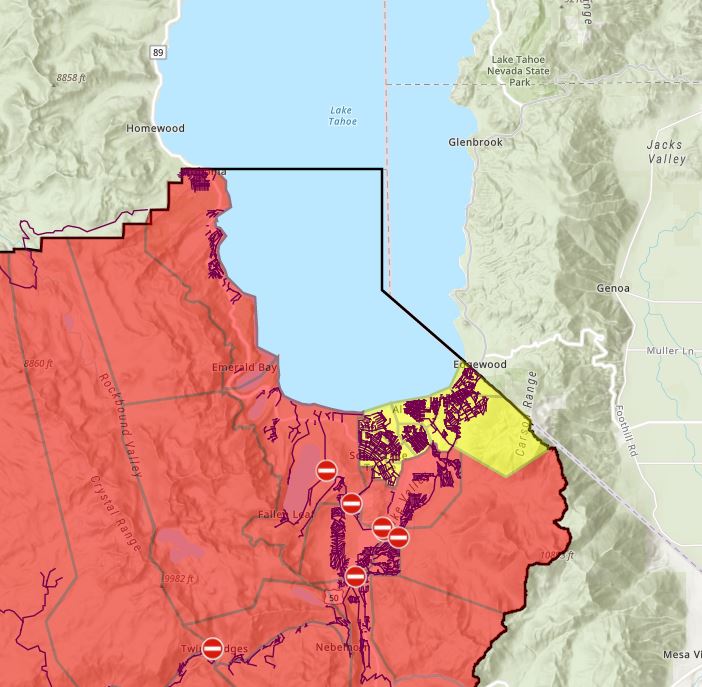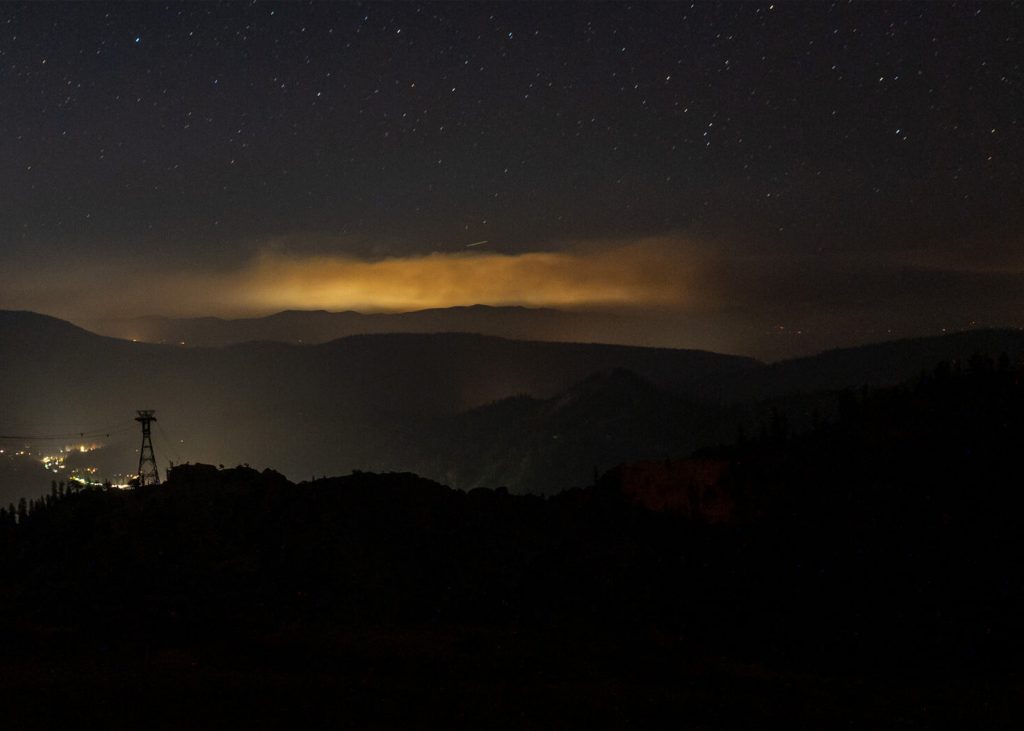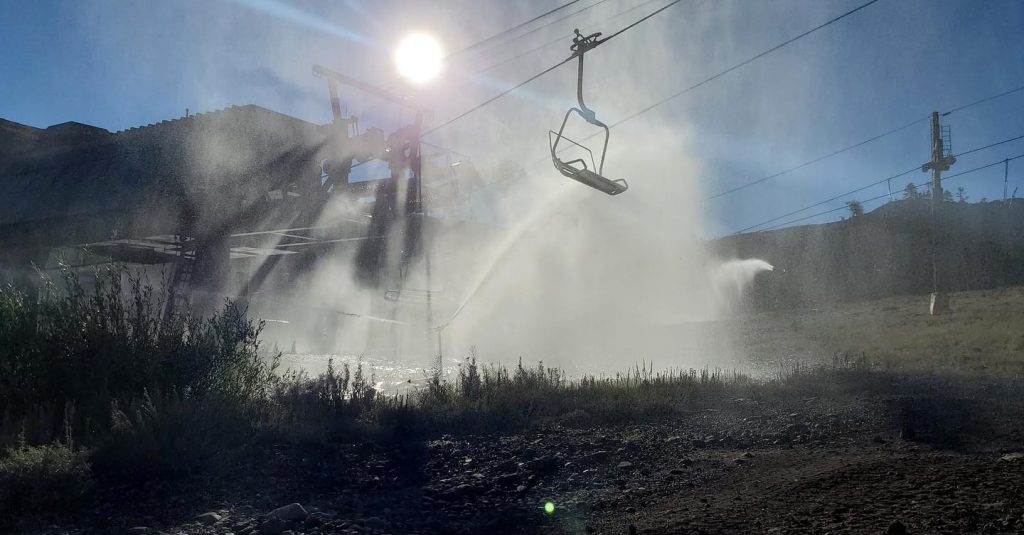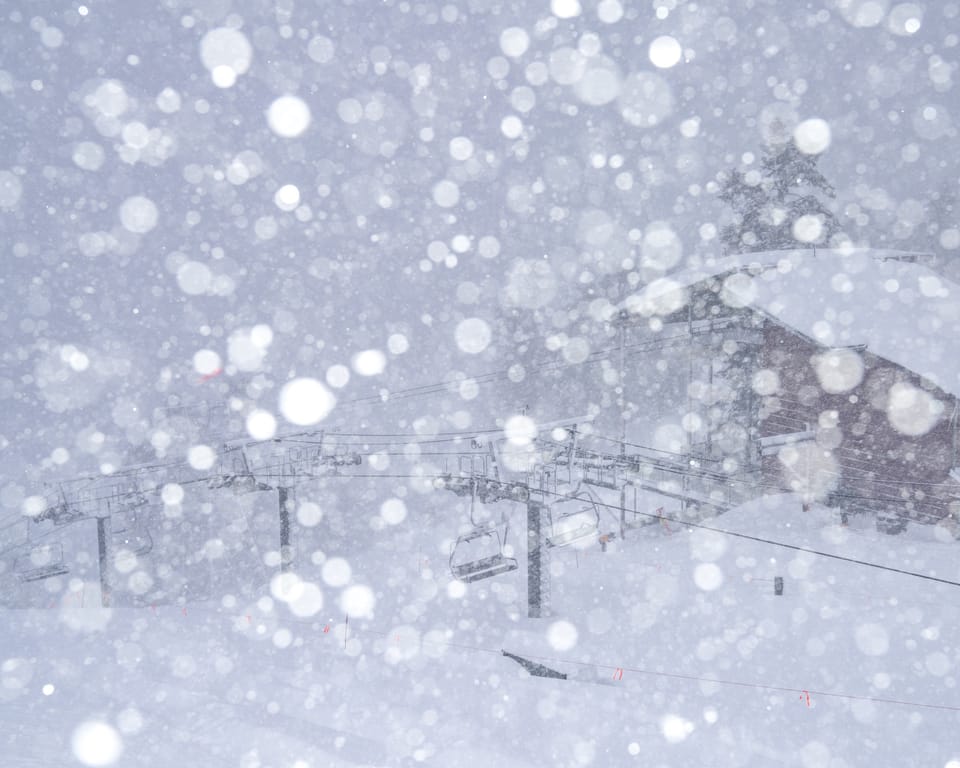Ski Resorts Threatened By Huge Ongoing Forest Fire Appear To Have Survived So Far

Three Californian ski resorts in the path of the devastating Caldor fire appear to have escaped major damage, according to reports so far, but firefighters have warned the battle is not over yet.
The Caldor fire, which began in mid-August, had grown to more than 200,000 acres and it was reported to take two hours to drove from one end of it to the other by the time it reached Sierra-at-Tahoe ski area last Sunday evening.
By midweek it was threatening the major resort-town of South Lake Tahoe, driven towards it on strong winds. The holiday town, population 22,000, is located on the California/Nevada border, and is located directly below Heavenly Mountain Resort. It quickly became difficult to breath there due to smoke and a full evacuation was ordered.
At the same time the fire was pushing up towards the boundary of a third ski area, Kirkwood.
So far all three areas seem to have survived with minimal damage, thanks to huge efforts by fire fighters and before them, the local community and wider ski resort community of California sending manpower and heavy equipment to create fire breaks. The easing of the strong winds late on Thursday was also a big factor.

However, in some cases it has not yet been safe to assess any damage caused to outlying ski runs and lifts and the fire continues to burn. On Friday firefighters said the main battle of the weekend would be an ongoing attempt to keep the fire from reaching Kirkwood. This has been ongoing since Wednesday, with spot fires reported to be breaking out beyond the defences against the main fire.
But a statement on Friday from Kirkwood seemed to indicate they are hopefully past the worst,
“While Kirkwood remains under threat, changing weather conditions, lighter winds, and the amazing progress made by firefighting personnel and our snowmaking teams have led to improved conditions for the coming days. We are cautiously optimistic and deeply grateful to everyone on the ground helping to keep us safe and protect the community we call home,” the statement said.
Heavenly issued a similar statement.
Video from Sierra at Tahoe appears to show the resort’s base buildings and ten chairlifts remain intact. However a vehicle maintenance shed which from the charred remains appears to have housed a number of slope grooming tractors was burned to the ground. Ski runs are also reported to have been burned.

All three resorts have prepared as far as they could for the arrival of the fire, all pointing snowmaking cannons at buildings and lifts to douse them in water as the fire approached and in some cases raged around them. Sierra-at-Tahoe also said they were helped prepare for more than a week before the fire hit by a team of expert fire-fighters sent by their insurers to try to minimise damage.
Since the evacuation of South Lake Tahoe, Heavenly’s car park has become the operations base for the fight against the fire, with around half of the more than 4,000 firefighters currently tackling the fire now working from there.
Kirkwood and Heavenly are both run by Vail Resorts who gained great support for issuing this statement,
“While protecting our resort is important, it is our people that are our top priority. Through our EpicPromise Employee Foundation, we are working diligently to coordinate assistance for our employees and their families. We’ve made direct grants available for those currently under an extended mandatory evacuation and are prioritizing food, shelter, and mental health support. We also continue to thank those people on the front lines fighting to keep us all safe.”
Most ski resorts in California, even those not currently impacted by the fires, have shut down and sent resources to the regions fighting the fire. State parks and forests are also all temporarily closed due to the extreme fire danger.
A second fire, the Dixie Fire, even larger than the Caldor Fire and covering about 1,320 square miles, is also currently burning about 65 miles north of the Lake Tahoe blaze. It is reported to be the second largest fire in the state’s history.

Climate change has made the West much warmer and drier over the past 30 years and will continue to make weather more extreme and wildfires more frequent, destructive and unpredictable, scientists have said.




